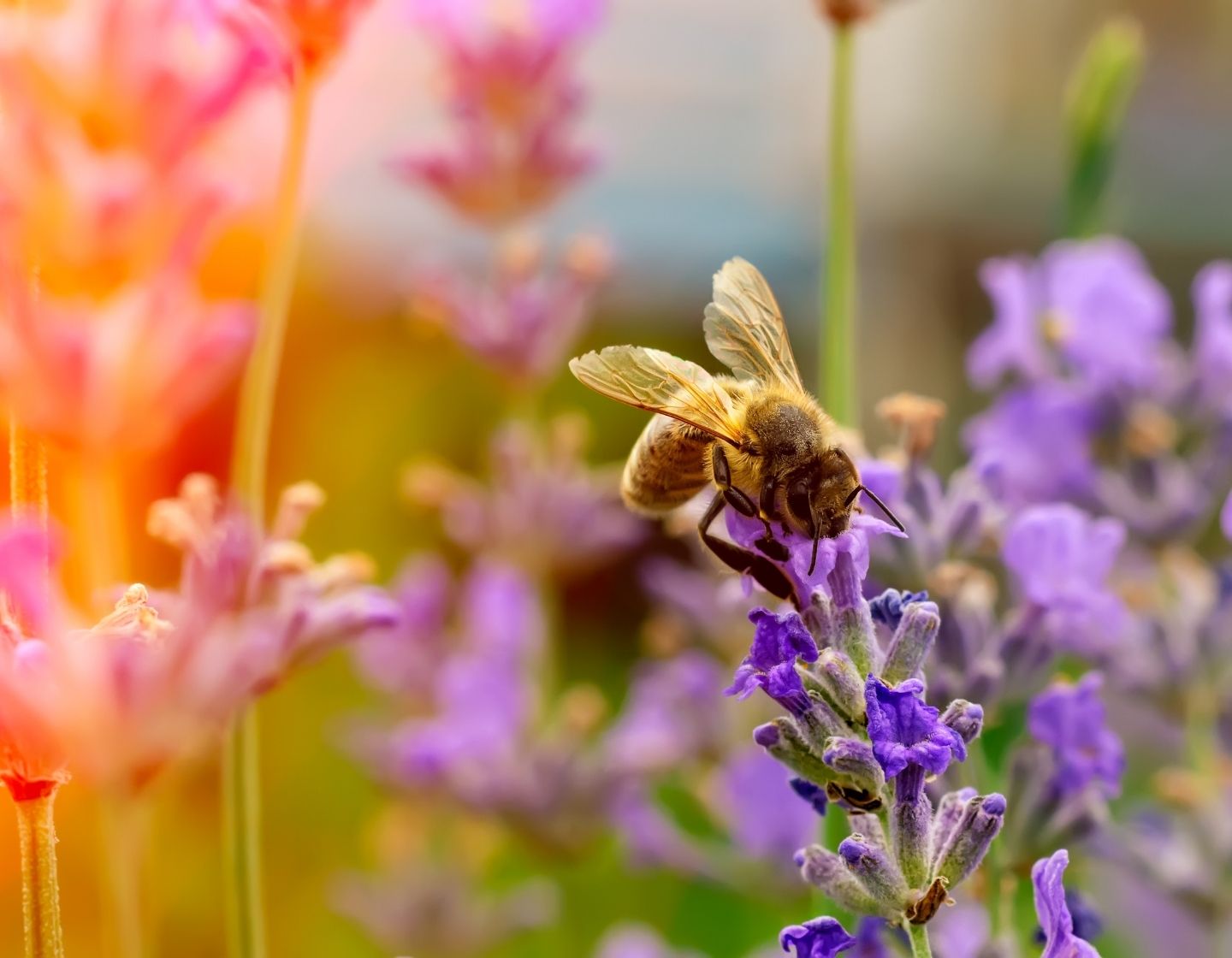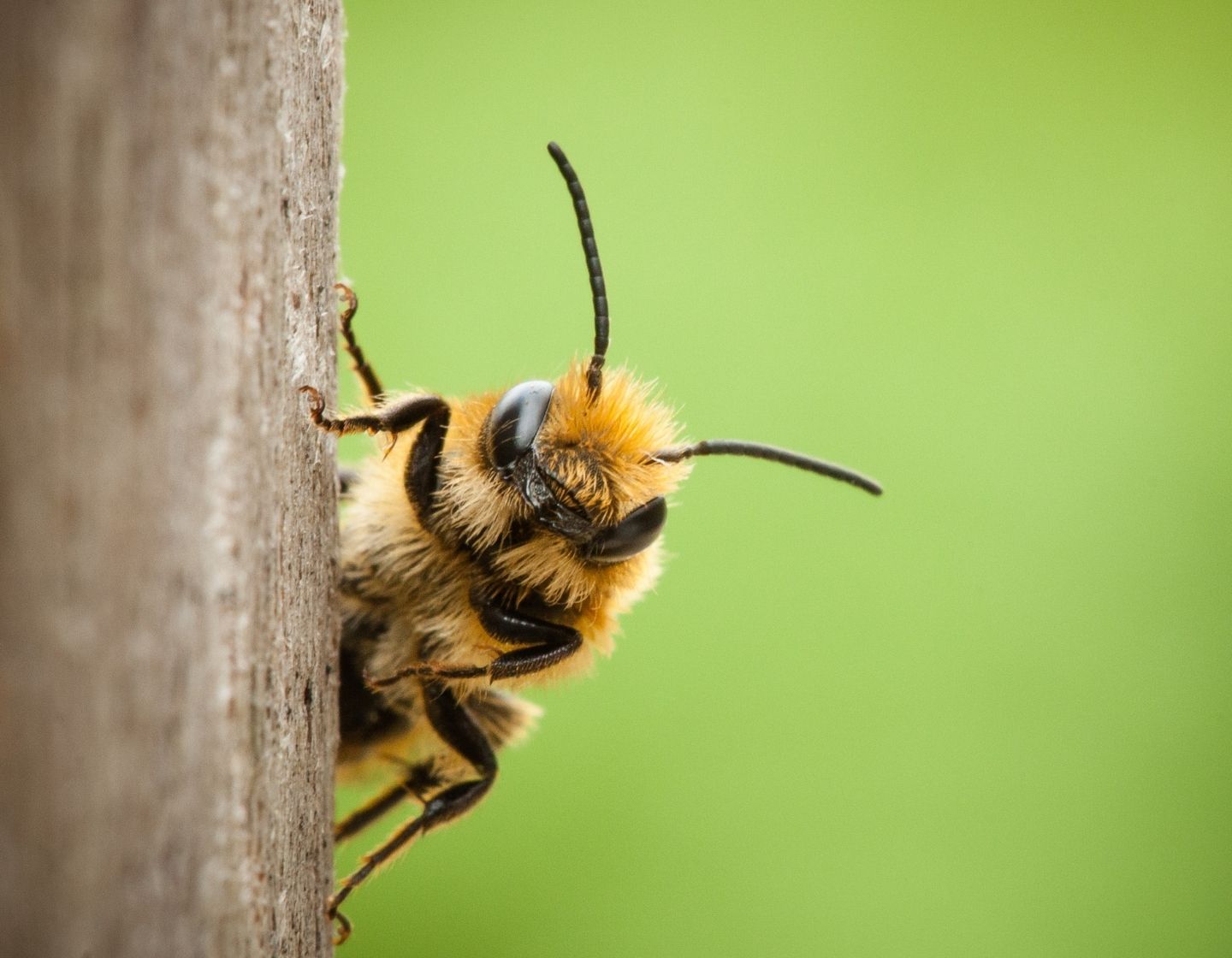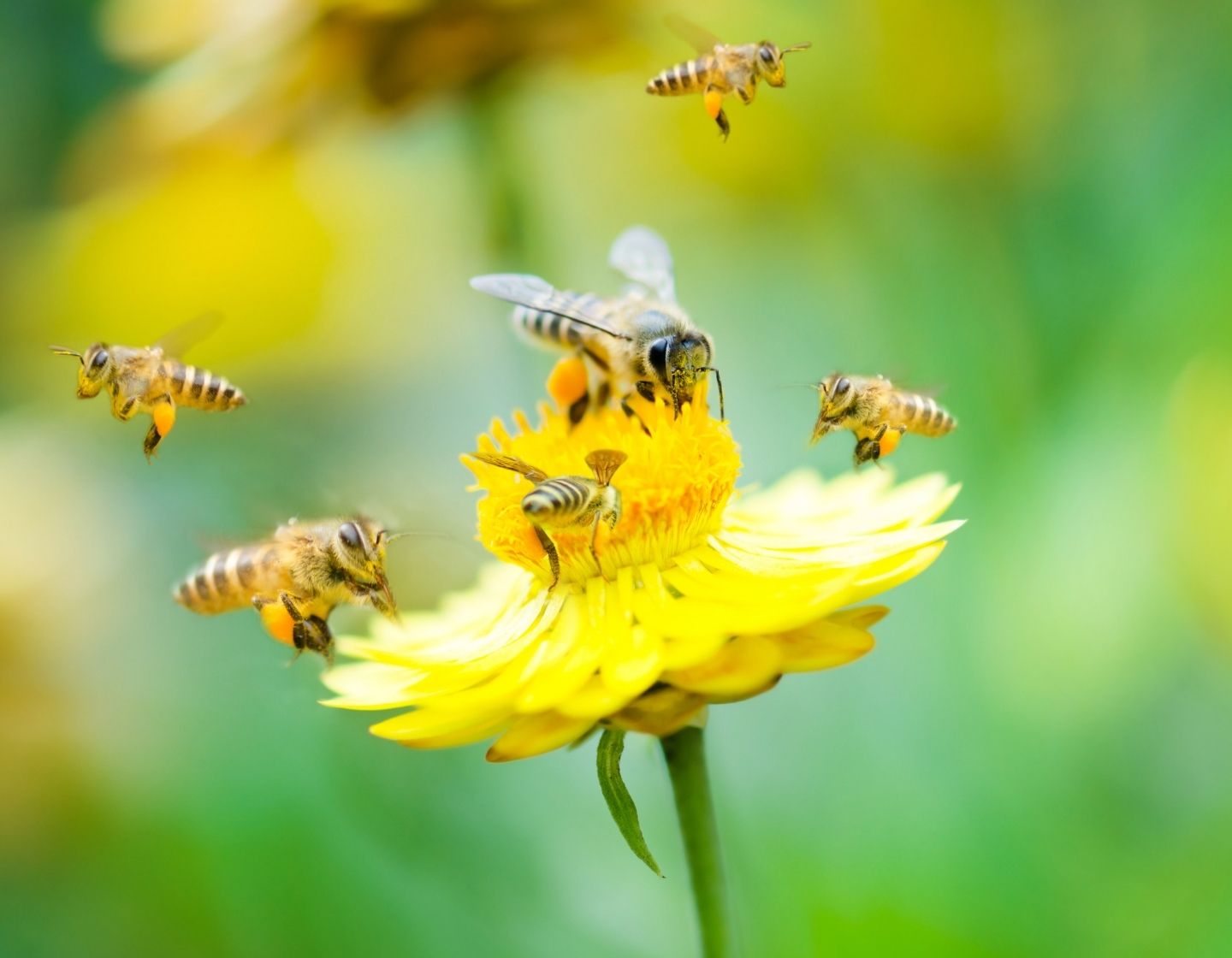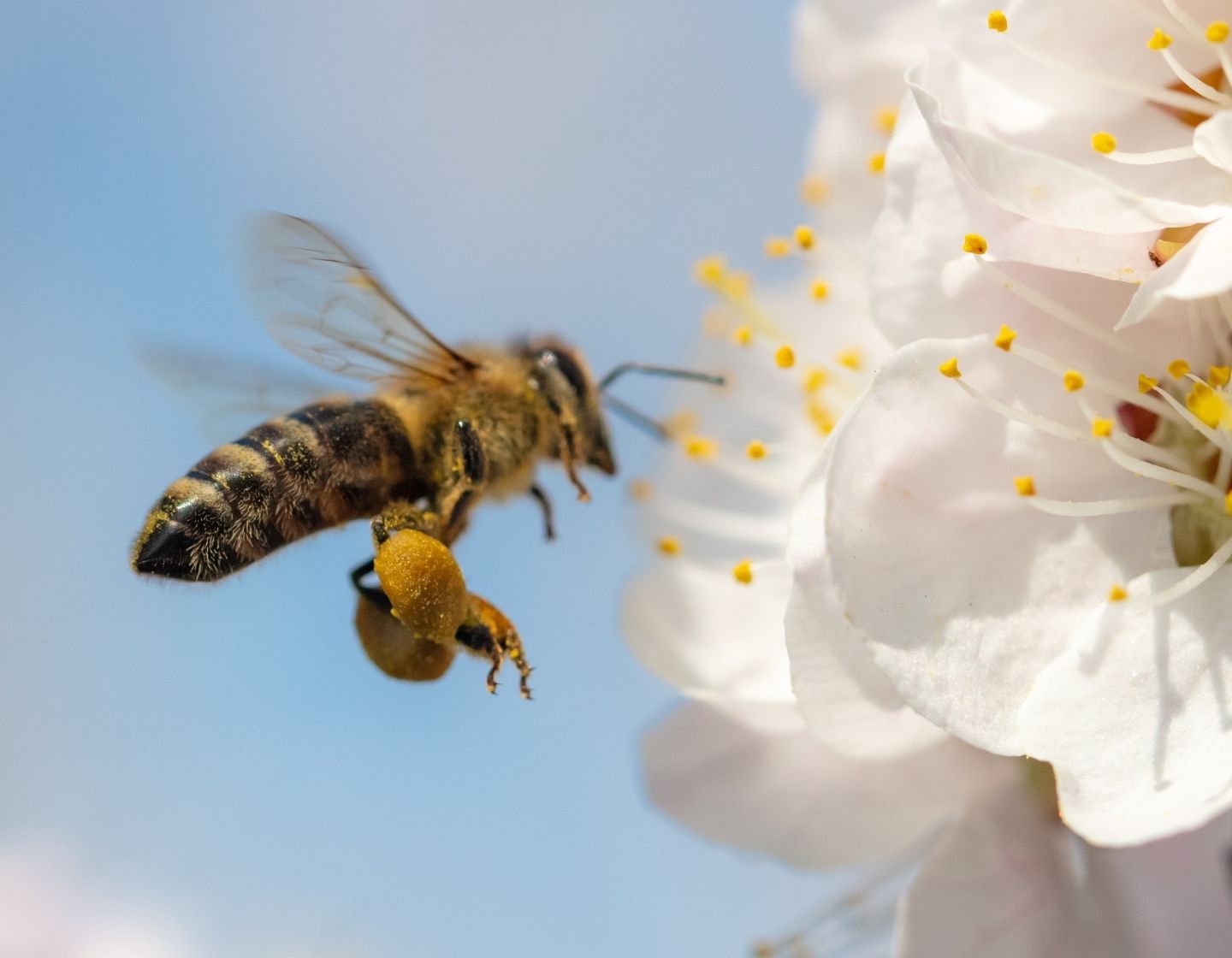World Bee Day | The pollinator crisis & how to save bees
Save the Bees is a popular saying at the moment, and for good reason. Bees are one of the most important elements of our planet. Without them collecting pollen from plants and flowers, we would not know life as it is today. They pollinate one-third of our crops, providing us with cotton for clothes, fruits and vegetables for a healthy diet, oils and more. However, bees and other pollinators are in a ‘pollinator crisis’ as their numbers are declining drastically.
In honour of World Bee Day, discover why pollinators are in decline and how you can combat it with bee-friendly planting and encouraging sustainable farming.
Why are bees important?
To put it bluntly, we need bees. We may not always notice they’re there, busy buzzing from flower to flower, but they’re helping plants grow and breed. This process keeps us alive and healthy, providing us with much of the products we live off. Bees pollinate roughly 80% of wildflowers in Europe as well as many of the crops we rely on. From the animal feed needed for meat production to the cotton needed for our clothes, the circle of life needs bees.
Many of our fruits and vegetables that make up our colourful diet such as strawberries, broccoli and apples, as well as the crops that feed our livestock, need to be pollinated. The loss of bees could lead to food shortages and impact our healthy diet. Additionally, it would cost farmers an extortionate £1.8 billion per year to manually pollinate their crops.
Bees help plants survive and flourish, helping to:
- Produce half of the world’s oils, fibres and raw materials
- Create many medicines
- Provide food and shelter for wildlife
- Keep waterways clean
- Prevent soil erosion
- Produce oxygen
- Absorb carbon dioxide
Sadly, the number of pollinators around the globe is quickly declining. With climate change and a growing population, the planet can’t afford to ignore this issue.
Fancy becoming a beekeeper? Learn about the basics and benefits of beekeeping for beginners.

The pollinator crisis around the world and the decline of the bees
Some people have labelled the decline of bees “the pollinator crisis”. If bees continue to decline in Europe at the current rate, it could lead to the breakdown of our economy. In the UK alone we have lost 13 species of bees and 35 more are currently at risk: bumblebees and wild solitary bees are most at risk. The decline of bees is caused by a combination of factors including loss of habitat, the use of pesticides and climate change.
Essentially, bees are declining because of:
- The use of pesticides, especially neonicotinoids
- New pests
- Urban development
- Climate change
- Global trade of low-quality honey
The intensification of farming has led to the increased use of pesticides. Farmers use toxic pesticides to kill unwanted pests but this harms bees, especially with the use of neonicotinoids. Researchers have found that it can impair bees’ ability to navigate, resist diseases and their ability to reproduce.
Additionally, the use of herbicides in urban developments such as parks and roadside verges reduces the number of plants and flowers for pollinating. Both of these factors also lead to the loss of habitat and food sources that bees need to survive. Protected wildlife sites are needed more than ever to ensure bees have safe spaces to rest. However, the latest government figures show that only 6% of habitats protected by EU laws in the UK are in “favourable condition”.
Scientists have also discovered that climate change is disrupting nesting behaviour and their return after winter. There is evidence to suggest that it may affect when plants flower – reducing the food bees can eat.

How to save bees?
Now you know how important it is that we fix the pollinator crisis! We don’t have to rely on huge corporations or government legislation, we can make a difference from our own garden and actions.
We can start by protecting existing habitats and planting for bees. This is pivotal because if we destroy a healthy established ecosystem, it can be impossible to recreate it. One of the easiest ways we can do this is by creating a bee haven in our garden.
Bees enjoy a wide selection of flowers. According to the Woodland Trust, bees love foxgloves and honeysuckle. You can read their top list of flowers to grow here. Aim to plant a range of flowers of different shapes and time periods to ensure that bees have something to eat and pollinate all year round. Top tip: avoid multi-petaled flowers because they are difficult for bees to access. They tend to lack pollen too.
One of the simplest ways to plant for bees is using SeedBoms. All you have to do is shake it, soak it and throw it before it flourishes. Attracting pollinators to your garden couldn’t be easier! The seeds and organic peat-free compost are packed inside a compostable, starch-based shell. The shell will completely biodegrade into the environment, leaving only plants in its wake. It’s a great and easy way to get the children involved too: teaching them about the importance of bees.
Learn how to teach children about sustainability.
We have a large range that includes different flowers for different pollinators. For example, the Butterfly SeedBom contains nectar-rich wildflower seeds including musk mallow, birds-foot trefoil, yarrow, oxeye daisy, red campion and forget-me-not. Or, the Pollinator Power SeedBom set includes a buzzing mix of cornflower, red clover and more for busy bumblebees and honeybees.
Even if you only have a small garden or a balcony, there are still plenty of ways to plant for pollinators. Herbs and window boxes offer a great space to plant bee-friendly flowers. The Urban Bloomer SeedBom is perfect for city dwellers that need some colour.
Find out the benefits of SeedBoms.

If you’re an avid gardener that prefers to plant seeds by hand, Mr Fothergill’s Wildlife Attracting Mixed Seeds are ideal. Quick and easy to grow, the pack includes hardy annuals to provide colour and sustenance to your garden all Summer long. Better yet, they’ve been specially chosen to attract wildlife.
Bees also need shelter to nest and hibernate in. Bee hotels are brilliant ways to add some personality to your garden while providing some much-needed support for bees. You can hang it in your garden or put them in a hedge, it doesn’t matter as long as it’s sheltered. Even leaving some twigs and stems in a corner of your garden can be enough for pollinators to find shelter in.
Creating a bee bath will let bees have a refreshing drink and well-earned rest in your garden. It’s super easy to make, simply fill a shallow birdbath or bowl with clean water and arrange pebbles or stones inside so that they can reach.
If you’re someone that likes their lawn immaculately mowed, why not try giving it a rest and letting all of it, if not a patch of it, grow longer. This will give pollinators and local wildlife a place to feed and shelter among the grass. Additionally, stop using pesticides and fertilisers in your garden.
While you’re strolling in the summer months, you may notice a still bee on the ground. Don’t presume that it’s dead or dying – it’s probably just tired and needs a sugar dose! If you mix two tablespoons of white granulated sugar with one tablespoon of water, you’ll create a sugary syrup for an energising boost. You can even buy ‘emergency survival bee kits’ – it’s a keyring with a little jar for your homemade syrup, so you can be prepared all summer long.
Other pollinators
It’s not just bees that do all the work! There are many other pollinators such as flies, wasps, moths, beetles, ants, butterflies and even some birds. In the UK alone, there are roughly 1,500 species of pollinators.
Butterflies
They can see more vibrant colours and ultraviolet light, making it easier to spot flower markings. They like flat-surface, clustered flowers in bright colours such as orange, red and yellow. They can also travel further than bees. However, their long legs make it difficult to pick up pollen on their bodies.
Moths
Most moths collect pollen during the night time. They also prefer clustered flowers with a flat base, but they prefer neutral colours. Some moths have longer tongues than their bodies that help them derive nectar from long nectaries.
Beetles
They were the first insect to evolve as pollinators, even before bees. They cannot reach pollen from trumpet-shaped flowers where pollen is deeply hidden. Rather, they prefer sticky pollens that can cling to their hard exterior.
Flies
Hoverflies in particular are great at pollinating. Their long mouthparts allow them to extract nectar from narrow flowers. Other flies such as march flies and dung flies also pollinate plants. They typically prefer flowers with funnel-like shapes like freesia.
Birds
They’re attracted to bright colours and they tend to target flowers that have deeply hidden nectar and durable support for perching on. Hummingbirds and sunbirds are two of the most effective pollinators.
Discover more top tips on how to transform your garden into a haven for wildlife.

Interesting facts
- There are over 20,000 species of bee recorded globally (270 of which are in the UK).
- More than 90% of the leading global crop types are pollinated by bees.
- Pollinators are worth £690 million per year to the UK economy.
- Honeybees are mostly kept in managed hives and pollinate between 5 and 15% of the UK’s crops. The other 85-95% of crops rely on wild pollinators.
- Bees can’t perceive the colour red.
- A honeybee can fly up to six miles and as fast as 15 miles per hour.
- Honeybees have their own language called the ‘waggle dance’ to communicate to each other where the best sources of food are.
- Bumblebees have a brain the size of a poppy seed.
The last buzzing line
Now you know why protecting those striped furry buzzing creatures is so important. We aim to make living sustainably as easy as possible which is why we created our Home Club. When you join, you’ll have access to handpicked eco-products such as our SeedBoms at unbeatable pricing.

